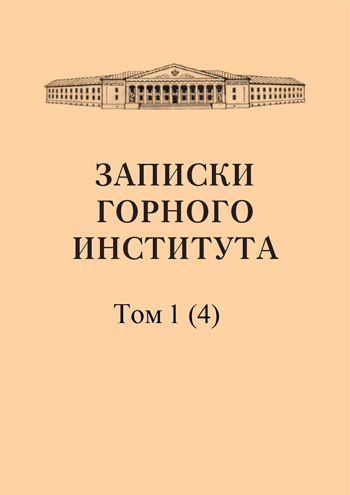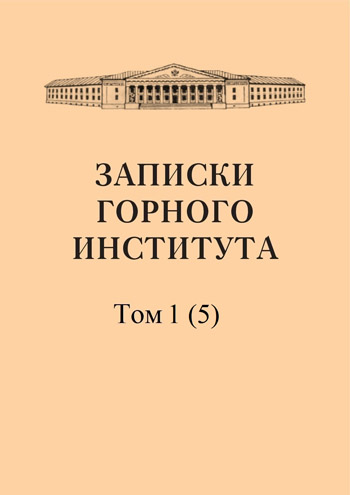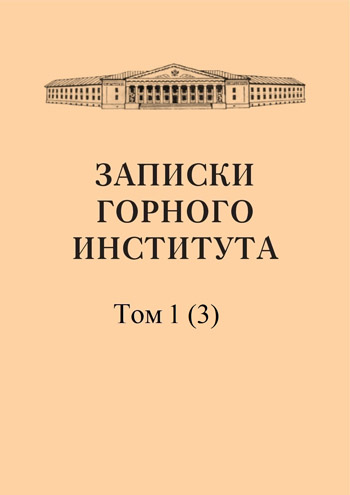-
Date submitted1908-06-25
-
Date accepted1908-08-22
-
Date published1908-12-01
About the influence of the concentration of reacting solutions on the appearance and structure of sediments
- Authors:
- P. P. von-Weymarn
This work, although it represents only one of the most important links in my extensive work on the states of matter, which I publish, for certain reasons, in German, is a completely accomplished independent whole. This work treats the question of the influence of the concentration of reacting solutions on the appearance and structure of sediments - a question that has not yet been completely developed in science, except for a few fragmentary observations.
-
Date submitted1908-06-03
-
Date accepted1908-08-13
-
Date published1908-12-01
Hypoparallel aragonite intergrowth from Bilin
- Authors:
- Ye. S. Fedorov
Among the deviations from the laws characteristic of real (ideal), that is, completely crystalline-homogeneous individuals, small deviations are often noticed both in the position of the edges and in general in the intergrowth of subindividuals.
-
Date submitted1908-06-20
-
Date accepted1908-08-02
-
Date published1908-12-01
Electrical conductivity of magnesium-lead alloys
- Authors:
- N. I. Stepanov
The study of the electrical conductivity of metal alloys makes it possible, along with other physical research methods, to judge about their chemical nature. Matthiessen, who carried out classical research in this area, was the first to try to find the relationship between the composition and electrical conductivity of alloys. But at that time (60s and 70s of the last century) ideas about the nature of alloys and information about their structure were so imperfect that it is not always possible to agree with the author’s conclusions on this issue.
-
Date submitted1908-06-17
-
Date accepted1908-08-02
-
Date published1908-12-01
New proof of the fundamental theorem of Algebra
- Authors:
- I. P. Dolbny
We will change x along a closed curve in the positive direction. A full description of the proof is in the article.
-
Date submitted1908-06-24
-
Date accepted1908-08-15
-
Date published1908-12-01
On a class of reducible hyperelliptic integrals
- Authors:
- I. P. Dolbny
Let us take the integral and find a substitution of the lowest degree, through which we achieve the reduction of this integral to an elliptic one.
-
Date submitted1908-06-28
-
Date accepted1908-08-12
-
Date published1908-12-01
Illustration of crystal structure with vector circles
- Authors:
- Ye. S. Fedorov
In the article “Precise imagery of space points on a plane”, the problem of such an image in three different elements is solved: vectorial and ordinary circles, and in parallel vectors. The practical application of images in parallel vectors of a system of mines is also given there. I will now show an essential application of the theory to the representation by vectorial circles of the spatial lattices of each structurally studied crystal.
-
Date submitted1908-06-07
-
Date accepted1908-08-15
-
Date published1908-12-01
Some of the rock samples from graphite deposits belonging to the mineralogical collection of the Mining Museum
- Authors:
- A. N. Zavaritsky
The studied samples are graphite-hosting rocks from various graphite deposits: the Mariinsky mine at the Botogolsky Golets (Aliberovskoye deposit), the Barrowdelsky mine in Cumberland and two Ural deposits - one near the Sysertsky plant; the location of the other deposit is unknown - probably from the Ilmen Mountains.
-
Date submitted1908-06-11
-
Date accepted1908-08-09
-
Date published1908-12-01
Construction of a curved surface of the 2nd order (conoseconds) from imaginary pairs of points or an imaginary conic section.
- Authors:
- Ye. S. Fedorov
We know that from two given points e with e' and a conical section K on the plane, we can reproduce a curved surface of the 2nd order, if from these points we take one e as the center of the second of the rays, and the second e' as the center of the second of the planes and bring these two seconds into a correlative relation so that the ray ea (a point on the conic section plane) will be considered correlative to the plane e'A, where A is the polar of the point a with respect to the conic section K. It is known that in such a surface a set of rays and their correlative planes.
-
Date submitted1908-06-04
-
Date accepted1908-08-29
-
Date published1908-12-01
Construction of curved surfaces of the second order (conoseconds) and a full hexahedron.
- Authors:
- Ye. S. Fedorov
No matter how elegant the construction of conic sections using Pascal's theorem is, it does not have sufficient generality, since it is applicable only for five real points of a curve, and in practical application it is more difficult than some other methods.
-
Date submitted1908-06-17
-
Date accepted1908-08-27
-
Date published1908-12-01
On the preparation of salts of alkali and alkaline earth metals in so-called colloidal amorphous formations that are highly crystallizing and highly soluble in water
- Authors:
- P. P. von-Weymarn
In my numerous reports and articles published in Russian and German from 1905 to 1908, I experimentally proved that the type and structure of sediment of any body can be changed at the will of the researcher.
-
Date submitted1908-06-10
-
Date accepted1908-08-19
-
Date published1908-12-01
Crystalline-liquid state as a general property of matter
- Authors:
- P. P. von-Weymarn
In my previous studies, published in 1905-1908 in Russian and German, I showed that any body, both simple and complex chemical composition, can be obtained: in good clear crystals; in an “irreversible” colloidal state (in the form of sols and “irreversible” colloidal-amorphous sediments); in a “reversible” colloidal state (by rapid cooling and increasing association of dissolved particles into the solution).
-
Date submitted1908-06-01
-
Date accepted1908-08-14
-
Date published1908-12-01
A note about one property of stereographic projection
- Authors:
- Ye. S. Fedorov
I consider it useful to note one property of stereographic projection, which it does not open up new ways for solving problems, still can contribute to greater accuracy in solving some of them.
-
Date submitted1908-06-10
-
Date accepted1908-08-20
-
Date published1908-12-01
On the issue of the formation of telluric iron from bog ores
- Authors:
- A. E. Kupffer
n 1891, 20 versts northeast of Vologda, near the Church of St. Nicholas of Vozimsky (near Lake Kubinskoe), a piece of iron was found under a peat mass in the thickness of bog ore, shallow from the surface. It was originally coated with a loose coating of ocher and immersed in bog ore; its weight together with ocher was 1100 grams. In some places it was permeated with rust to a certain depth. Freed from the ocher shell, it had the shape of a spherical sector measuring about 10 centimeters wide and about 5 centimeters thick; it was veined and in places contained fine granular inclusions of ocher magnetic ironstone.


